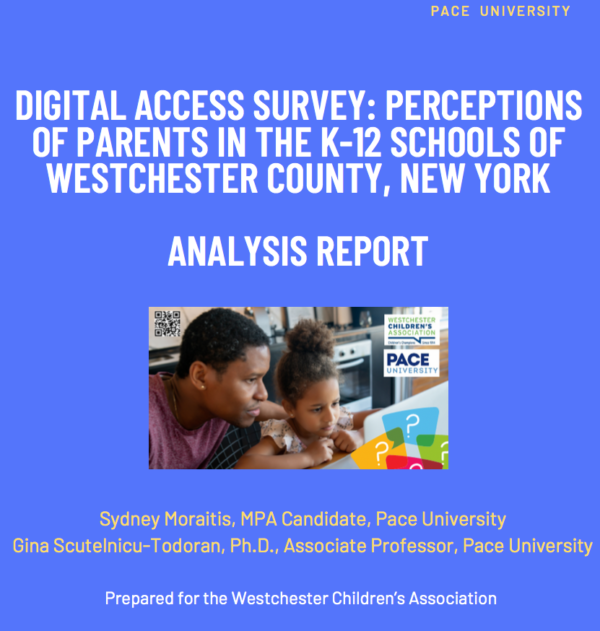Deep digital divide in Westchester
A report from Pace University prepared in partnership with the Westchester Children’s Association (WCA) that examined digital access among families in Westchester County found that the digital divide is having measurable impacts among segments of the population. Although targeted to explore what is happening among families with children in kindergarten through 12th grade, the survey resulted in a suggestion that businesses providing health care in Westchester need to take a look at their online capabilities.
 “Health care providers should consider streamlining their online health appointment process to meet the abilities of new online users,” the report said. “They should also consider providing support in teaching families how to access health information online so that their patients become confident in their health care and lifestyle decisions.”
“Health care providers should consider streamlining their online health appointment process to meet the abilities of new online users,” the report said. “They should also consider providing support in teaching families how to access health information online so that their patients become confident in their health care and lifestyle decisions.”
The report of survey results was authored by Sydney Moraitis, who is in Pace’s Master of Public Administration program and Gina Scutelnicu-Todoran, an associate professor at Pace. The report is titled “Digital Access Survey: Perceptions of Parents in k-12 Schools in Westchester County, New York.”
WCA pointed out that almost 25,000 households in Westchester County have no internet service according to the latest data from the U.S. Census Bureau. Nearly 14% of people making $75,000 or less do not have an internet subscription. People of Hispanic origin are almost twice as likely not to have an internet subscription than the rest of the population.
WCA and Pace, along with the STEM Alliance and the Westchester Library Association have formed the Digital Inclusion Coalition to work on overcoming the digital divide with the belief that digital equity is now a human right.
“Our digital access survey recognizes that digital inequity is present in Westchester County in terms of student and family access to electronic devices, internet options, digital literacy, digital communication and experiences with remote learning,” said Moraitis. “The survey”™s findings suggest that digital access and literacy reform is necessary for all children and parents to be well-equipped to participate online and have confidence in doing so.”
Scutelnicu-Todoran, suggested that the digital divide gap could be narrowed if the needs of various groups were better served.
“The fact that families and children from under-represented groups in Westchester County have fewer digital access opportunities than those who are better-off is not surprising,” she said. “What”™s new is that children and families from under-represented groups have different digital access needs.”
The report indicated that families with lower income levels, less education, and those having an under-represented ethnical and racial background were less likely to own or receive an electronic device from a school, and are less likely to have internet access when compared with their counterparts.
“On average, participants reported they had six electronic devices per household, with smartphones being the most common and the Chromebook being the least common,” the report said. “Participants whose primary language is Spanish were less likely to own their devices and more likely to borrow a device from school.”
According the survey, 61% of the participants indicated that they have Broadband internet alone, 32% have Broadband along with data access via cellphone and 5% have cellular data alone. When it comes to cost, 35% of the survey participants said they spend $100 or more on internet each month, Ӭ54% spend between $50 and $99.99 per month on internet access, and 10% spend between $35 and $49.99 per month on internet access. The survey found that less than 1% receive financial assistance for internet access.
“Most respondents were unaware of the government internet affordability programs and an overwhelming amount conveyed that they would like to receive more information on those programs,” the report said. “Over 70% of participants indicated that their school has provided either very or somewhat specific information on remote learning options and most respondents expressed confidence in their digital access to accommodate remote learning.”